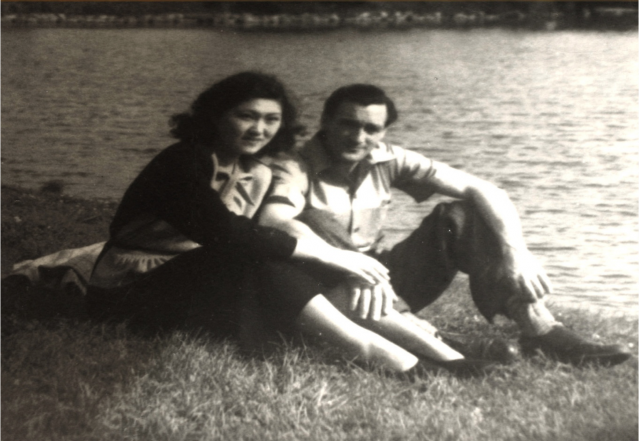Brazilian Racial Democracy: Reality or Myth?
Humboldt Journal of Social Relations
Volume 10, Number 1, (Fall/Winter 1982/83): Race & Ethnic Relations: Cross-Cultural Perspectives
pages 129-142
Carlos Hasenbalg, Professor of Sociology
Instituto Universitário de Pesquisas do Rio de Janeiro
Suellen Huntington
University of California, Berkeley
The Brazilian claim to “racial democracy” is examined historically. and in light of the 1976 Pesquisa Nacional por Amostra de Domicílios data on race. class. and social mobility in Brazil. Racism is seen as limiting upward mobility for all non-white Brazilians, pointing to a potential break in Brazil’s “color—class continuum.” The interlocking social mechanisms which maintain Brazilian faith in the existence of racial democracy are briefly analyzed.
The popular Brazilian ideology of racial democracy holds that there is no prejudice or discrimination against non-whites in Brazil. certainly not when compared to the United States. This paper examines that ideology in terms of the realities of race, class, and social mobility in contemporary Brazil. We begin by briefly describing the historical background of the ideology of racial democracy as it bears on race relations in Brazil. Second, we summarize and criticize three main theoretical approaches to race relations and their Brazilian variations. Third, we discuss racism as a causal variable in social stratification and compare the evidence of social mobility for white and non-white Brazilians. Finally, we analyze the social mechanisms supponing the Brazilian belief in racial democracy and their effects on equality of opportunity in Brazil. For perspective, we note the most pertinent comparisons to the United States.
HISTORICAL DEVELOPMENT
Brazil’s history helps explain the development of the ideology of racial democracy and its strong hold on the Brazilian popular mind. Brazil. colonized under the auspices of the Portuguese crown, remained subject to its strongly authoritarian, paternalistic, and monarchical traditions for three-hundred years. Unlike the United States where slavery was an issue from its very beginning and became a bitter point of contention in the Civil War. slavery was easily accepted by Brazil‘s Portuguese settlers whose long familiarity with slavery dates to the Moorish invasions. These differences of attitude influenced the racial compasition of their respective populations. In Brazil through the 1850, half the population was enslaved; in the United States, slaves were never more than fifteen percent of the population. The presence of this large slave population in Brazil, along with the relative absence of white women, prompted a high rate of miscegenation resulting in a large group of mixed race and mulatto slaves. In the United States, where miscegenation was both less common and illegal, all offspring of mixed unions were classified as negroes.
Brazil, the last country in the Western hemisphere to relinquish slavery, did so slowly, in a series of compromise reforms which sought to balance the needs of a plantation economy for cheap. plentiful labor against a sporadic, mostly non-violent, abolitionist movement and the force of international condemnation. When the national legislature passed an abolition law in 1888, most slaves in Brazil had been freed, partly by state legislatures acting independently, but also by county governments, by city governments, by city blocks, and by private citizens. Rather than a tumultuous emancipation, Brazilian slavery merely disintegrated. In the United States, the slavery issue was finally settled in 1865 with the Northern victory in the Civil War.
To solve the plantation labor crisis envisioned as the aftermath of abolition and to ease the transition to free labor, the Brazilian government instituted in 1885, a program promoting the importation of European workers. This program attracted 6,500 Italian laborers in 1886, 30,000 in 1887, and 90,000 in 1888, the year of offical emancipation. During the period of emancipation, immigrant labor worked side-by-side with ex-slaves, but most ex-slaves, unable to compete with the relatively more skilled, relatively more literate European workers, were soon relegated to the lowest positions—unskilled labor and domestic service, tenant farming and sharecropping—in the urban and rural workforce. In the United States, skilled black workers were replaced by whites in the post-Civil War South; in the North, they were systematically excluded from the skilled trades, from all but menial labor, and from union membership. In post-emancipation Brazil, however, the replacement of black ex-slaves by white immigrants resulted from hiring decisions by individual employers rather than from any systematic or organized opposition, thus tending to create class rather than racial antagonisms.
In addition, in the United States whites filled the intermediate positions in the occupational hierarchy, leaving blacks only the least desirable, worst paying positions. In Brazil the labor shortage, together with a prejudice in favor of light skin, caused these intermediate positions to be filled by mulattoes. This labor market preference for whites first, mulattoes second, and blacks last created a status and income continuum corresponding to the color continuum, in contrast to the caste-color line created in the United States…
Read or purchase the article here.

